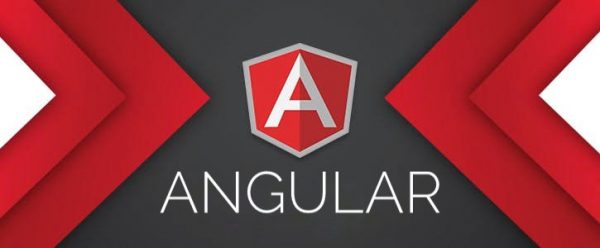Frontend framework WAR
Angular, React, Vue, and jQuery are four popular JavaScript frameworks or libraries that can create dynamic and interactive web applications. This article will compare them based on various criteria, such as their features, performance, popularity, support, learning curve, advantages and disadvantages, and some examples of well-known applications built with them. We will also discuss what companies are behind these frameworks and what developers can expect from them. Finally, we will give some recommendations on which framework is best for what scenario.
Features

Angular is a full-fledged front-end framework that provides a complete solution for building single-page applications (SPAs). It follows the Model-View-Controller (MVC) pattern and supports two-way data binding, dependency injection, routing, testing, and more. Angular uses TypeScript, a superset of JavaScript that adds static typing and other features.

React is a UI library that focuses on rendering components efficiently. It uses a virtual DOM to update the UI without affecting the actual DOM. React also supports one-way data binding, hooks, custom elements, server-side rendering, and more. React uses JavaScript with JSX, an extension that allows embedding XML in the code.

Vue is a progressive framework that can be used to create simple or complex web applications. It is inspired by Angular and React and combines some of their best features. Vue supports reactive data binding, directives, transitions, routing, state management, and more. Vue uses a templating syntax that is similar to HTML but with special attributes and expressions.

jQuery is a lightweight library that simplifies DOM manipulation, event handling, animation, Ajax, and more. jQuery is not a framework but rather a collection of useful methods that can be used with plain JavaScript or other frameworks. jQuery uses a fluent syntax that makes it easy to chain multiple operations.
Performance
Performance is an important factor to consider when choosing a framework or library for web development. Performance depends on various factors, such as the size of the codebase, the complexity of the logic, the number of DOM elements, the browser compatibility, and more. Therefore, it is not easy to compare the performance of different frameworks or libraries in a general way.
However, some benchmarks have been conducted to measure the performance of Angular, React, Vue, and jQuery in specific scenarios, such as creating or updating rows in a table, selecting rows, swapping rows, removing rows, etc. The results of these benchmarks show that they all perform quite well at most tasks, but there are some differences.
According to the JS Framework Benchmark , Vue is considerably slower than Angular and React at selecting rows. React is slightly faster than Angular at creating rows but slightly slower at appending rows. Angular is faster than React and Vue at swapping rows but slower at removing rows. jQuery is slower than all three frameworks at most tasks except selecting rows.
According to the RealWorld Benchmark , Angular has the largest codebase size among the four frameworks or libraries. React has the smallest codebase size but requires additional libraries for routing and state management. Vue has a moderate codebase size but also requires additional libraries for routing and state management. jQuery has the smallest codebase size but does not provide any structure or features for building complex applications.
Popularity
Popularity is another factor to consider when choosing a framework or library for web development. Popularity indicates how widely used and supported a framework or library is by developers and companies. Popularity can be measured by various metrics, such as the number of downloads, stars, forks, contributors, issues, etc. on GitHub or npm.
According to npm trends , React has the highest number of downloads among the four frameworks or libraries in the past year. Vue has the second-highest number of downloads followed by jQuery and Angular. However, jQuery has the highest number of downloads in total since it has been around longer than the other three frameworks or libraries.
According to GitHub , React has the highest number of stars among the four frameworks or libraries followed by Vue and Angular. jQuery has the lowest number of stars but has the highest number of forks. React also has the highest number of contributors followed by Angular and Vue. jQuery has the lowest number of contributors but has the highest number of issues.
Support
Support is another factor to consider when choosing a framework or library for web development. Support indicates how easy it is to find help and resources for learning and troubleshooting a framework or library. Support can be measured by various metrics, such as the availability of documentation, tutorials, courses, forums, stack overflow questions, etc.
According to their official websites, all four frameworks or libraries have comprehensive documentation that covers their features, APIs, examples, guides, etc.
They also have official or community-supported tutorials, courses, books, videos, etc. that can help beginners and advanced developers learn and master them.
According to Stack Overflow , jQuery has the highest number of questions among the four frameworks or libraries followed by Angular and React. Vue has the lowest number of questions but has the highest percentage of answered questions. React has the second-highest percentage of answered questions followed by Angular and jQuery.
Learning curve
Learning curve is another factor to consider when choosing a framework or library for web development. Learning curve indicates how easy or difficult it is to learn and use a framework or library. Learning curve depends on various factors, such as the familiarity of the syntax, the complexity of the concepts, the amount of boilerplate code, the flexibility of the options, etc.
According to most developers:
jQuery has the easiest learning curve among the four frameworks or libraries since it is based on plain JavaScript and has a simple and intuitive syntax. jQuery also has a lot of examples and resources that can help developers get started quickly.
Vue has the second-easiest learning curve among the four frameworks or libraries since it is also based on plain JavaScript and has a templating syntax that is similar to HTML. Vue also has a clear and concise documentation that explains its features and concepts well.
React has a moderate learning curve among the four frameworks or libraries since it uses JavaScript with JSX, which is a syntax extension that allows embedding XML in the code. React also has some advanced concepts, such as hooks, custom elements, server-side rendering, etc. that require more understanding and practice.
Angular has the steepest learning curve among the four frameworks or libraries since it uses TypeScript, which is a superset of JavaScript that adds static typing and other features. Angular also has a complex structure and architecture that follows the MVC pattern and requires more configuration and boilerplate code.
Advantages and disadvantages
Advantages and disadvantages are another factor to consider when choosing a framework or library for web development. Advantages and disadvantages indicate the pros and cons of using a framework or library for building web applications. Advantages and disadvantages depend on various factors, such as the features, performance, popularity, support, learning curve, etc. of each framework or library.
According to most developers, some of the advantages and disadvantages of each framework or library are:
Angular
Advantages:
- Provides a complete solution for building SPAs with features such as routing, testing, dependency injection, etc.
- Supports two-way data binding that synchronizes the data between the model and the view automatically
- Uses TypeScript that adds static typing and other features that enhance code quality and readability
- Has a large and active community that provides support and resources
Disadvantages:
- Has a steep learning curve that requires learning TypeScript and Angular-specific concepts
- Has a large codebase size that can affect performance and loading time
- Has a complex structure and architecture that requires more configuration and boilerplate code
- Has frequent updates that can introduce breaking changes
React
Advantages:
- Provides a fast and efficient way of rendering components with features such as virtual DOM, hooks, custom elements, etc.
- Supports one-way data binding that makes the data flow more predictable and easier to debug
- Uses JavaScript with JSX that allows writing HTML-like code in JavaScript
- Has a huge and active community that provides support and resources
Disadvantages:
- Requires additional libraries for routing, state management, testing, etc.
- Has a moderate learning curve that requires learning JSX and React-specific concepts
- Has some compatibility issues with older browsers
- Has frequent updates that can introduce breaking changes
Vue
Advantages:
- Provides a progressive framework that can be used for simple or complex web applications with features such as reactive data binding, directives, transitions, etc.
- Supports both templating syntax and raw JavaScript or JSX for creating components
- Has a small codebase size that improves performance and loading time
- Has a clear and concise documentation that explains its features and concepts well
Disadvantages:
- Requires additional libraries for routing, state management, testing, etc.
- Has a smaller community than Angular or React that provides less support and resources
- Has some compatibility issues with older browsers
- Has less market share than Angular or React that affects its demand
jQuery
Advantages:
- Provides a lightweight library that simplifies DOM manipulation, event handling, animation, Ajax, etc.
- Uses plain JavaScript that is familiar to most developers
- Has a simple and intuitive syntax that makes it easy to chain multiple operations
- Has a huge and active community that provides support and resources
Disadvantages:
- Does not provide any structure or features for building complex applications
- Has a low performance compared to modern frameworks or libraries
- Has some compatibility issues with newer browsers
- Has less market share than modern frameworks or libraries that affects its demand
Examples of well-known applications built with each framework or library are:
Angular
- Google AdWord: Google’s online advertising platform uses Angular to handle its complex user interface requirements.
- Upwork: The freelance marketplace utilizes Angular for various parts of its web application, ensuring a fluid user experience.
- Weather.com: The weather forecasting service takes advantage of Angular’s features to present real-time data efficiently.
React
– Facebook: Created and maintained by Facebook, React is also used extensively throughout the company’s products, including the main Facebook app and Instagram.
– Airbnb: The popular home rental service utilizes React to provide users with an interactive and responsive platform.
– Netflix: The streaming giant relies on React for its performance and modularity, enabling a seamless viewing experience.
Vue
–Alibaba: The e-commerce giant utilizes Vue for its front-end development, benefiting from its simplicity and efficiency.
– Xiaomi: The Chinese electronics company leverages Vue to craft user-friendly interfaces across various platforms.
– Grammarly: The online writing assistant uses Vue to create a responsive and intuitive experience for its users.
jQuery
– Twitter: Before adopting other solutions, Twitter utilized jQuery for various functionalities, emphasizing simplicity and compatibility.
– Microsoft: Various Microsoft products have been known to incorporate jQuery, taking advantage of its ease of use.
– IBM: The tech giant has employed jQuery in several web solutions, appreciating its straightforward approach to handling everyday web tasks.
Companies Behind These Frameworks
- Angular: Developed and maintained by Google, ensuring constant updates and strong community support.
- React: Created by Facebook, providing a guarantee of ongoing development, innovation, and extensive community engagement.
- Vue: Initiated by a former Google engineer, Evan You, Vue is now maintained by him and the open-source community, making it an independent project.
- jQuery: Created by John Resig, jQuery has been maintained by a team of open-source contributors, making it platform agnostic.
Recommendations
Choosing the proper framework or library depends on various factors, including project requirements, team expertise, and long-term goals.
- For Large-scale, Complex Applications: Angular might be preferable, thanks to its comprehensive toolset and strong typing through TypeScript.
- For Modern, Component-based Development: React is well-suited, especially with its thriving ecosystem and focus on component reusability.
- For Progressive, Flexible Development: Vue offers a balanced approach and can be a great choice for projects that require a smooth learning curve with powerful features.
- For Simplicity and Quick Prototyping: jQuery, though somewhat dated, can still be effective for simple tasks and smaller projects that don’t require the complexities of full-fledged frameworks.
Conclusion
Angular, React, Vue, and jQuery each offer unique strengths and weaknesses that cater to different project needs. Understanding these frameworks’ features, performance, popularity, and support will help developers and organizations make informed decisions tailored to their specific scenarios. Continually evaluating and adapting to the evolving web development landscape ensures that the right tools are chosen for the right tasks, leading to successful and efficient application development.


